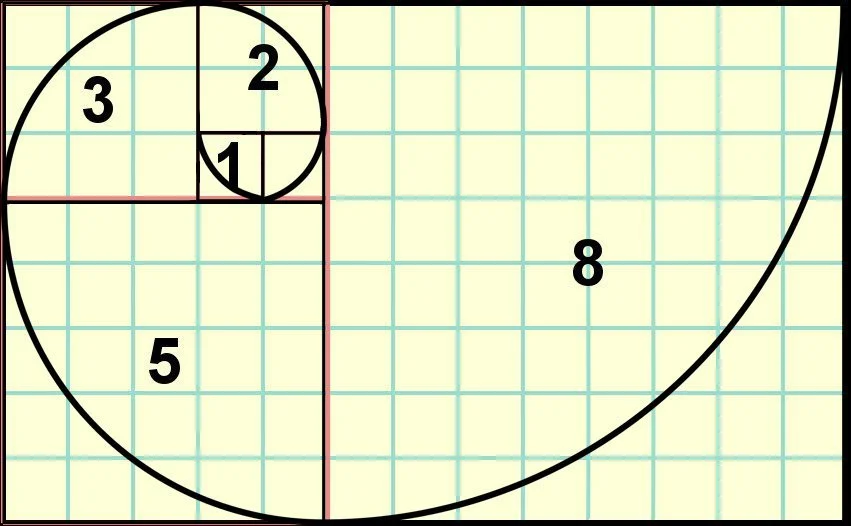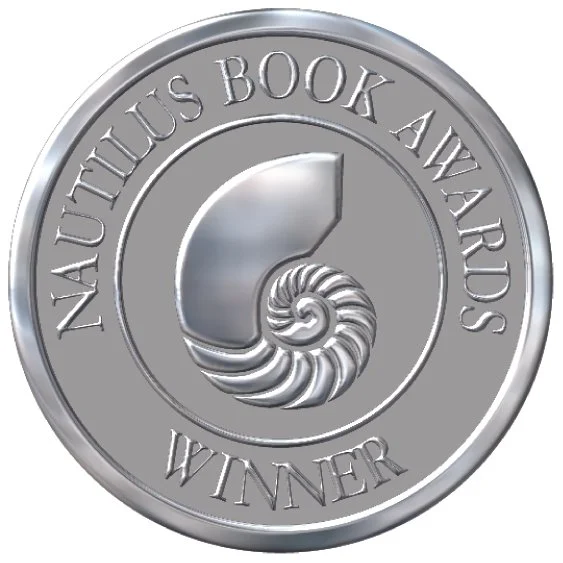sequences, spirals and a literary award
Marcus’s ammonite. Don’t tell him that I stole it, but it’s mine now.
Allow me to get hella nerdy.
My favourite mathematical sequence is the Fibonacci Sequence. (I bet that’s a sentence you didn’t expect to read today, but I did warn you.) Developed by the Italian mathematician Lionardo Fibonacci, it’s a simple sequence of whole numbers. After the first two numbers (0 and 1), each number is calculated by adding the previous two numbers in the sequence. It looks like this:
0, 1, 1, 2, 3, 5, 8, 13, 21, 34, 55, 89, 144, 233, 377, 610, 987, 1597, 2584, 4181, 6765, 10964 …. you get it, right?
(Look, sometimes my engineering degree shows. I can’t help it.)
Anyway, the reason I love this sequence is because it can be graphically represented, and when it is, it looks like a spiral.
Image from this link.
(I know, it’s a bit confusing, but you can watch this video to see how it’s drawn.) The resulting spiral is called a Fibonacci Spiral (or my personal favourite, the Golden Spiral).
Now. Even if you didn’t follow me this far, even if up to this point, you now only know that there’s a sequence named after an Italian mathematician, and that when you graph it, it looks like a spiral, here’s the supremely cool part:
Spirals exactly like the Fibonacci Spiral, same shape, same proportions, occur in nature all. the. time.
You’ll see Fibonacci Spirals in the unfurling of fiddle leaf ferns. In pine cones. Pineapples. Flower petals. Sunflower seeds. Romanesco broccoli. Snail shells. Sea shells. You’ll see Fibonacci Spirals in the way waves in the ocean form. In the shape of hurricanes. In the shape of our galaxy.
And sometimes, even whales feeding.
It would take someone with a far superior mathematics and physics mind than mine to explain why this simple sequence repeats itself so often in our universe, but honestly, I’m not sure that I need to know. To me, the Fibonacci sequence is simply mathematical evidence that the universe is full of beautiful magic.
I’ll come clean: there’s a reason why Fibonacci Spirals have been on my mind lately.
Last week, on our way home from England, I sprung for the internet service on our flight — which is why I received the following email from my publisher the moment it came in:
Hello, Karen!
I’m thrilled to share that Radiant Rebellion was chosen as a Silver Award winner for the Nautilus Book Awards! A tremendous honor!
Huh, I thought, I think I’ve actually heard of the Nautilus awards! So I googled to learn more. It turns out that the Nautilus Book Awards was created back in 2000 to “celebrate and honor books that support conscious living and green values, wellness, social change, social justice, and spiritual growth.” They look for “literary contributions to spiritual growth, green values and sustainability, wellness, social change, and social justice. ” Past recipients include Barbara Kingsolver, Thich Nhat Hanh, and Desmond Tutu.
People.
I can’t tell you how much this silver award means to me. Radiant Rebellion is the most personal book I’ve ever written, and I so deeply believe in aging joyfully. That it was even considered for this award is the highlight of my writing career, and that it was chosen as a Silver Award winner?
Well. I’m just beside myself.
The symbol for the award is the nautilus, which is shaped like — you guessed it — a Fibonacci Spiral. So it feels extra special to me. I have to express my sincere gratitude to the folks at the Nautilus Book Awards for even considering my book, as well as my editor, Valerie Weaver-Zercher. Because trust, that woman takes me in hand when I turn in my raw manuscripts. I’m so grateful to her.
(And of course, thank you so much to all of you who have supported my little book. I’m so, so deeply grateful to you.)
All this said, this brings me to my wish for us this week: may we all witness evidence that the universe, despite all its ills, is still full of beautiful magic. And if you find the evidence hard to find, here’s a hint: look for the Fibonacci Spirals.




















a reminder of cadence.